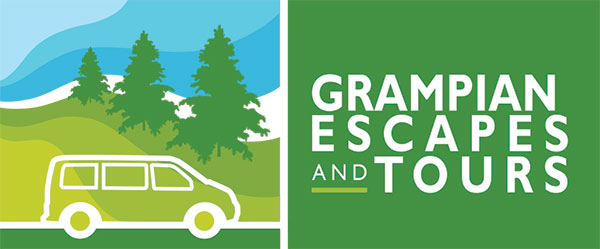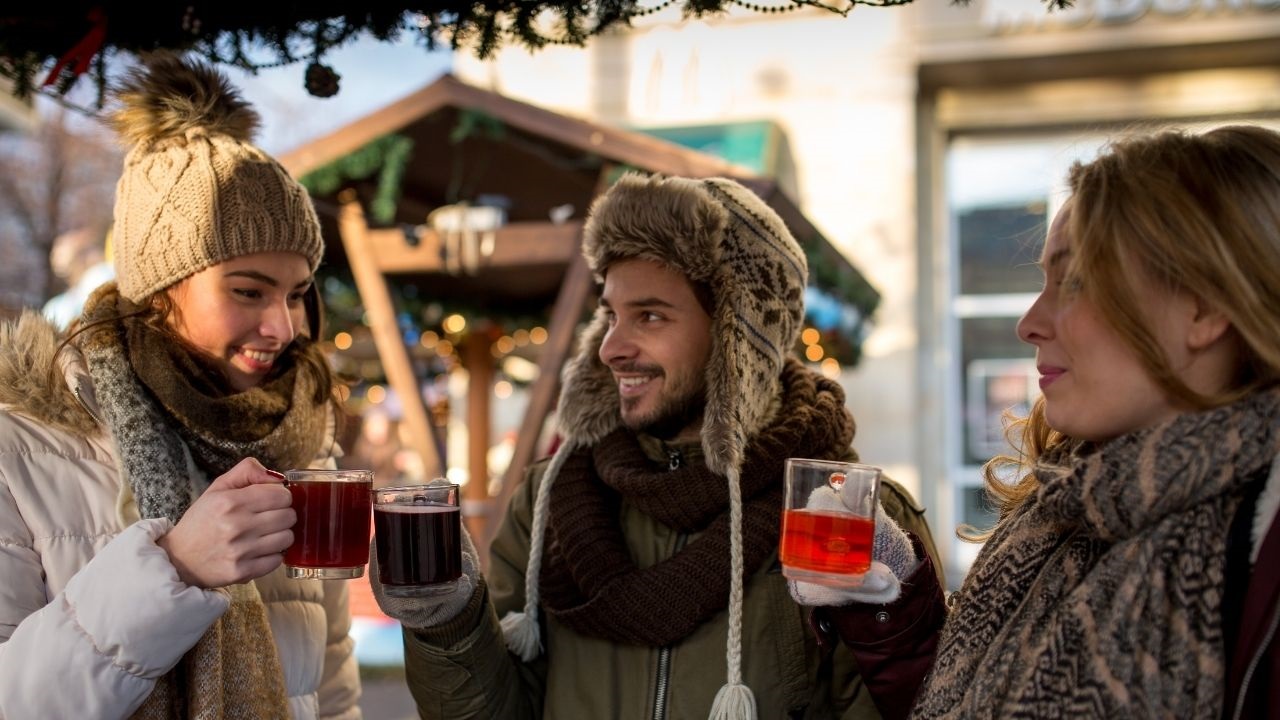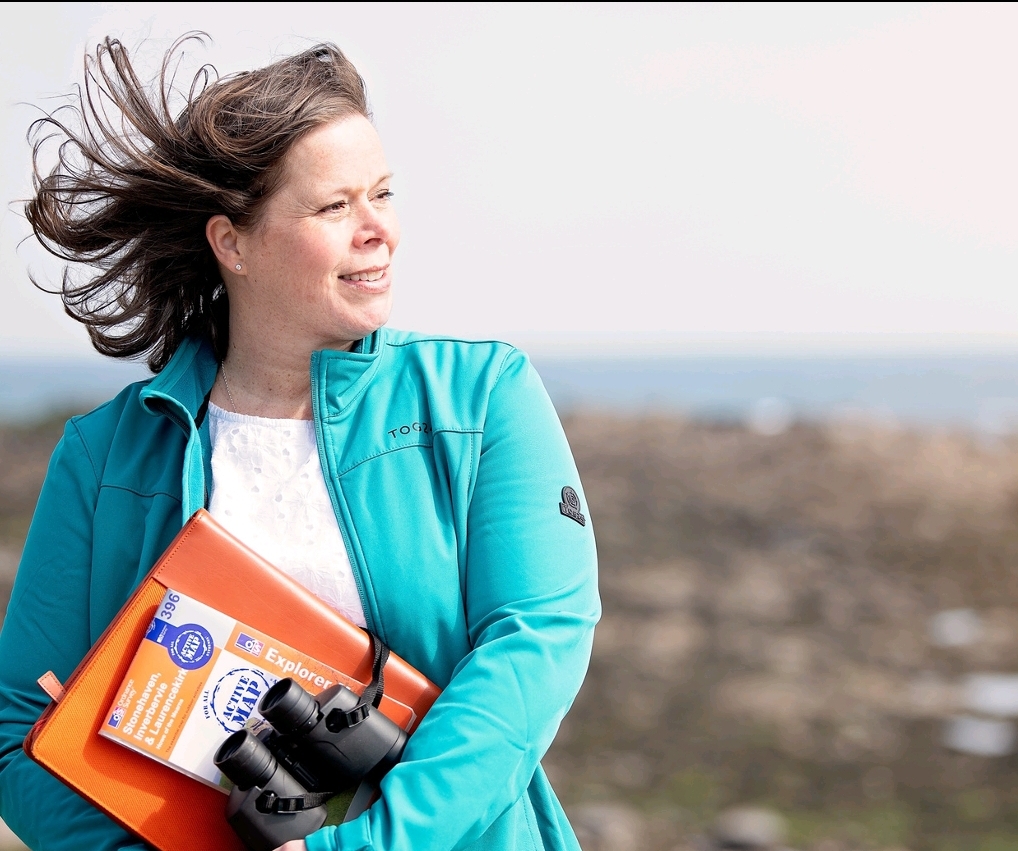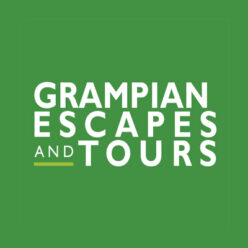Scottish Christmas traditions are, maybe surprisingly, not so traditional. Curious to find out why?
In this episode of the podcast we are having a slightly different vibe as we are talking all things Christmas and Hogmanay in Scotland. I share some of the traditions around this time of year, we hear from a good friend Catherine Leiper about her experiences of the festive season growing up and the traditions she has continued in her own family. We learn a bit more about some of the more unusual and forgotten celebrations such as the Burning of the Clavie with Fiona-Jane Brown and how herring played a role in a very curious act. Finally we finish with a Hogmanay poem written by Angela Wybrow.
To hear the stories and traditions told, listen on the podcast player below.
One of the most unknown facts about Scottish Christmas traditions is they haven’t been around very long. For nearly 400 years, the celebration of Christmas as we celebrate it today was banned in Scotland. It’s no wonder that the Scottish New Year’s festival, Hogmanay, can be celebrated for several days.
During the mid 17th century, the people of the United Kingdom was oppressed by Oliver Cromwell, during a period known as the Reformation. During the Reformation, parliament issued a ban on Christmas in 1647, and this ban was in place for nearly 15 years. When Cromwell fell from grace, the ban was lifted in most of the U.K., but not in Scotland. The Scottish Presbyterian Church continued to discourage Christmas holiday festivities, including formal Mass, and people suffered penalties if caught celebrating. This ban lasted for nearly 400 years.
Christmas was a quiet, reverent affair observed by church services and hard work. Well into the 20th century, Scots worked on Christmas day. Few adults exchanged presents, although children received small treats and tokens. There would be a light Christmas dinner. Some families had small evergreens in the home, or decorated doorways with boughs of holly.

Once the ban on Christmas was lifted, the Scottish adapted many of the Christmas traditions used in England and the U.S. Today, the Scots celebrate with festive Christmas trees and presents for all. Although Christmas Day was not actually recognised as a public holiday until 1958 and boxing day was added to the national holidays in 1974! Up until then, many people were expected to work and carry on with their daily tasks and celebrate in the evening. Now, many are able to take Christmas and Boxing day off, and we recognise those who are, due to their work, still having to work and are grateful to them.
Modern Scottish Christmas traditions are similar to those of other western countries. People sing carols (wassailing) and decorate their houses with lights, putting a Christmas tree in the window and a wreath on the door. Children write letters to Santa Claus, and on Christmas Eve leave something for him to eat (like a mince pie) and drink (like sherry or whisky) when he visits in the night.
On Christmas Eve some families like to attend midnight mass, and on Christmas Day people give and receive presents before gathering around the table for a hearty lunch. People pull crackers, tell (bad) jokes, make toasts and then relax for the rest of the day, often in front of the television to watch the annual Queen’s speech or a festive film.
Festive Feast
The traditional meal usually begins with cock-a-leekie soup. Roasted turkey has become the traditional main course, but glazed ham and leg of lamb, among others, are also common. Side dishes may include the usual sprouts and roasted vegetables, stuffing of different kinds but in many Scottish homes you’ll also find Skirlie. Skirlie is made from pinhead oatmeal, and as Catherine said in the podcast, the Scots LOVE their oats.
Skirlie is a Scottish dish, made from oatmeal fried with fat, onions and seasonings. The “skirl” indicates the noise made by the frying ingredients. Famous oatmeal brand Hamlyn’s of Scotland share their recipe for making this specialty.
For many tables a Christmas pudding and shortbread are often served for dessert. However the most famous dessert is likely to be the Cranachan! We know it sounds like it should come from the deep and be dark and scary like the Kraken, but this is the complete opposite and a must try. Cranachan is a traditional Scottish dessert. It was originally a celebration of harvest, made following the raspberry harvest in June. The dessert of cream and fresh seasonal raspberries is bolstered by Scottish oats and whisky. It has been called ‘the uncontested king of Scottish dessert’. There are many good recipes for this wonderful dessert but we recommend that you keep it simple and traditional.
The following is a recipe from the BBC Good Food Website by Juliette Lawrence Wilson
Ingredients
570ml/1 pint double cream
85g/3oz porridge oats
7 tbsp whisky
3 tbsp honey
450g/1lb raspberries
fresh mint, to garnish
Method
Toast the oats in a frying pan, being careful not to burn them.
Lightly whip the cream until it reaches the soft peak stage, then fold in the whisky, honey, oatmeal and raspberries.
Serve in dessert glasses garnished with a few raspberries and mint.

There are lots of great websites where you can find more traditional Scottish festive recipes. Please visit The Wee Larder by Angie Milne. She has some delicious takes on the Clootie Dumpling. Also visit the Scottish Scran, their collection of tasty recipes are vast and you’ll be sure to find something to add to your Christmas or New Year table.
Hogmanay Celebrations
New Year’s Eve in Scotland is called Hogmanay. This joyful gathering was especially celebrated in the years when Christmas was ‘banned’, and celebrations could last for days! Edinburgh now hosts one of the world’s biggest and most famous Hogmanay street parties, with an amazing fireworks display. All over the country, Scottish people brighten up the dark winter with music, poetry and bonfires.
There are plenty of Scottish Hogmanay traditions, some dating back centuries and some only a few decades old. Certainly the most famous is the singing of ‘Auld Lang Syne’, which was written by the iconic Scottish poet Robert Burns and sees people gathering together and linking arms to sing in unison. This became a popular convention by the mid-20th century. There are other poems and songs by writers like Robert Louis Stevenson that celebrate Hogmanay and the passing of the year, but nothing holds a haggis to Burns’s classic song.
Scotland also has some weird and wonderful Hogmanay events. The Stonehaven Fireballs Festival has its roots in pagan traditions – for nearly a century, residents of this Aberdeenshire town have paraded along the streets on Hogmanay, swinging giant fireballs to drive evil spirits away and purge the old year.
In Orkney you’ll need to fight for a view of the Kirkwall Ba’ on New Year’s Day, which sees almost the entire town turned into a football pitch for a chaotic and competitive kickabout! In Burghead in Moray, the ‘burning of the clavie’ involves carrying a flaming tar-filled barrel through the streets.
Some Scots like to encourage good luck in the new year by doing a spot of ‘redding’ and cleaning their house from top to bottom on Hogmanay. It’s also meant to be bad luck to clean or do laundry on New Year’s Day – in case you sweep or wash away the good luck! So instead of cleaning, the more thick-skinned of us may take part in the Loony Dook – a modern tradition where people take a dip in the Firth of Forth on New Year’s Day.
The most frequently observed custom which is still very much part of modern-day New Year Celebrations is the first visitor to a home on Christmas Day was called the First Footer. The person must bear gifts of coal, whisky, salt and bread to symbolize warmth, conviviality, flavour in life and food to eat.
We wish you all the best of the season
We thank you all for your support this year, the downloads of our podcast, the kind comments, visit us in Aberdeenshire and choosing to spend some of your holiday time with us on tour. We look forward to another year full of wonderful experiences and opportunities to share our beautiful corner of Scotland with you.
Slainte!




